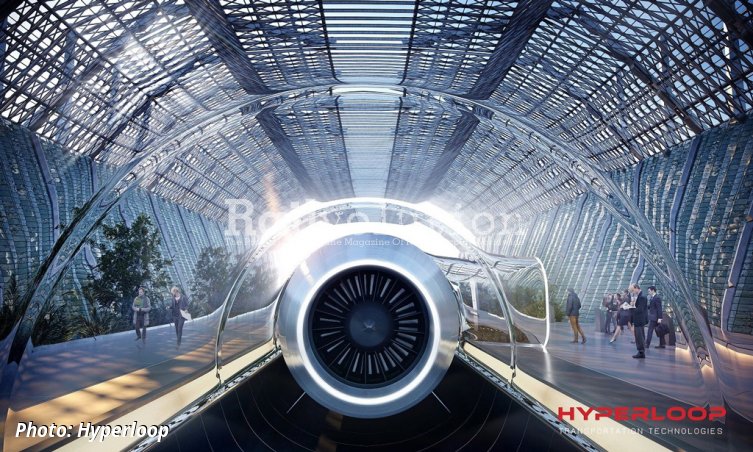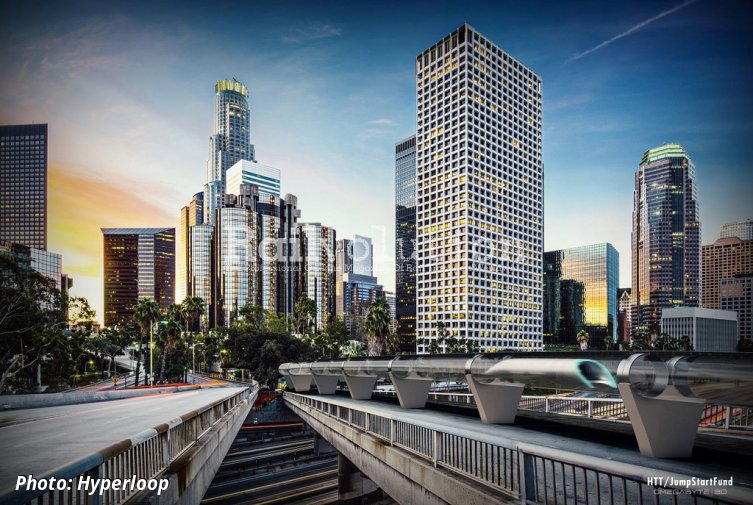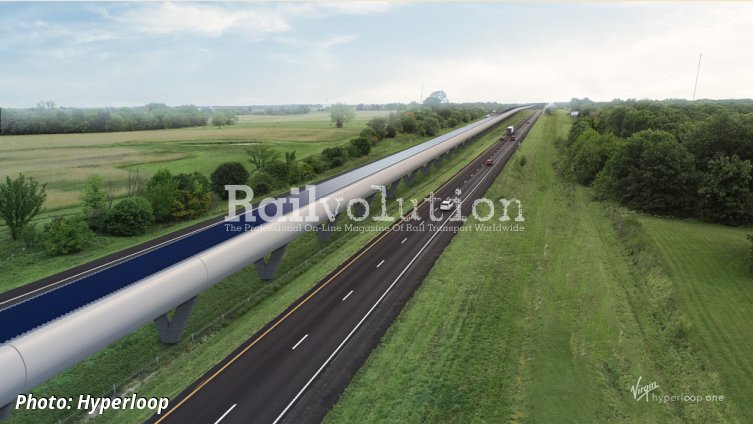Hyperloop - The Train-In-A-Vacuum-Tube Fantasy (6)
posted on 6th Mar 2020 14:39
Maintaining The Vacuum
The technically challenging question of stations and airlock provision has already been dealt with. But if the objective behind developing a vacuum tube public transport system is to save energy, it is essential to avoid the vacuum being lost, even at stations. To reduce air pressure from 100 kPa to 0.1 kPa means the consumption of around 0.4 kWh/1 m3 of electrical energy to drive the vacuum pumps. This can be described mathematically as follows:
A = p . V . ln (p / p0) / (3 600 . η) = 100 . 1 . ln (100 / 0,1) / (3 600 . 0,5) = 0,4 kWh
A … energy to power the air pump (kWh),
p … atmospheric air pressure (kPa),
p0 … reduced air pressure (kPa),
V … volume of chamber in which air pressure is to be reduced (m3),
η … pump efficiency.
It can thus be seen that the creation and subsequent maintenance of a vacuum is neither energy-saving nor cost-effective. For example, for two tubes of a pipeline with an internal piping diameter of 4.0 m and a length of 200 km, it is necessary to drain 5,000,000 m3 of air, which requires about 2,000,000 kWh of electricity. By way of comparison, a conventional high speed train with a capacity of about 500 passengers, and consuming 20 kWh electric energy per km, would be able to cover the abovementioned 200 km stretch 500 times using the same amount of 2 million kWh energy.
Vehicles For Use In Vacuum Tubes
Conventional rail vehicles, built for interoperable use, are subject to a wide range of regulations, standards and norms, which affect design and safety of operation. But to date there are few such limitations on the design of vehicles built for use in vacuum tubes. Designers will, however, have to take into account all the necessary requirements for providing a safe and reliable public transport system. These will include the technology used for vehicle guidance and support, ensuring that passengers are shielded from vacuum spaces, and are protected adequately in the event of accidents and collisions.
The on-board environment must be suitable for passenger transport in terms of temperature, air pressure and humidity, acceleration, shocks, vibrations, and noise, and adequate provision must be made for boarding and alighting. In the event of an emergency, safe evacuation, both from the vehicle and from the tube, must be possible. Issues such as the on-board energy supply, acceleration and braking rates will have to be addressed, as will factors relating to loading gauge, safety, reliability, fire protection, EMC - and there are many more.
Evidently, a similar body of specifications, documentation and legislation will be necessary for vacuum tube transport systems. This will have to be analogous to the TSI legislation currently in force in Europe, and will have to incorporate a set of standards under which the design, construction, testing and authorisation of the vehicles to be used must take place. Theoretically, this is all possible. There is one major handicap: at present there are only a few people sufficiently qualified to undertake the task and very few people interested in studying at technical universities to provide a future workforce with the necessary knowledge. The work involved in creating a set of standards specifically for vacuum tube vehicles is so extensive that given the current workforce characteristics, it would take a long time to complete. And no transport system can be operated without being proven compliant with accepted design and safety requirements.
Powering Vacuum Tube Vehicles
Some Hyperloop presentations have in the past suggested that vacuum tube vehicles could be powered using aircraft-type engines. However using propellers, turbo-props, turbo-charged or jet engines is not possible, because these require an oxygen supply, so that the fuel can burn. Moreover, propellers can only function where there is air, at ambient pressure, to create a force against which they can propel.
Also rocket engines (with an oxidiser supply) could not be possible because all these aforementioned types would degrade the quality of the vacuum by generating large quantities of exhaust gases. And in a vacuum tube, unlike in the open air, there would be no means of extracting such gases, which would remain in the tube, and would also contribute to its heating.
Having dismissed the (im)possible alternatives, we are left with only one feasible type of power source - electric drive. Developers of vacuum tube vehicles are currently considering the use of linear electric motors, where the rotor is on the vehicle and the stator forms part of the track. These would be suitable on account of the need to reduce vehicle weight as far as possible, because of the high starting acceleration rate (see earlier), and the good adhesion. Linear electric motor also enables a contactless inductive power transfer from the track to the vehicle via a magnetic field.
Use of linear inductive motor would, however, substantially increase the construction costs of the vacuum tube, because it is necessary to install a stator and related semiconductors along the whole length of the vacuum tube. There is also the problem of heat losses of the linear motor. Part of the losses from the stator will be discharged from the vacuum interior of the tube to the open air.
But part of the heat losses from the rotor will remain in the vehicle in the vacuum, and it would be necessary to ensure their removal, or provide storage facilities for them. This is a highly demanding task, given the high performance of the traction motor together with the vacuum environment. Here, heat removal from the very thin air into the outside atmosphere is reduced by a thousandth, since there are 1,000 times few molecules left in what remains of the air inside the tube (see here).
The article will continue.



